

Between the serene Hallstätter See and the towering Dachstein mountains lies Hallstatt. Its a picturesque village in Austria that seems straight out of a fairy tale. With its breathtaking landscapes and rich history, Hallstatt is a destination that offers a unique blend of cultural heritage and natural beauty. Here’s your travel guide to Hallstatt – explore the enchanting world of Hallstatt, including its history, how to get there, where to stay, and things to do.
A Short History of Hallstatt
Prehistoric Beginnings and Salt Mining Legacy
The story of Hallstatt begins over 7,000 years ago, during the Early Iron Age. This period, marked by significant advancements in toolmaking, metallurgy, and trade, saw Hallstatt emerge as a pivotal hub due to its rich salt mines. Salt, often called “white gold,” was essential for food preservation and seasoning.
By the Middle Ages, Hallstatt’s salt mining flourished. The town became a hub for the salt trade. Its wealth grew, evident in charming buildings. In the 19th century, tourism began to take off. Visitors came for the stunning landscape and historical charm. The town’s beauty inspired artists and writers alike.
The Hallstatt mine is considered one of the oldest in the world, where mining has been continuous since prehistoric times.
The Path to UNESCO World Heritage Recognition
The uniqueness of Hallstatt, however, is not confined to its ancient salt mines. The village’s cultural landscape, comprising a breathtaking combination of natural beauty and human settlement, has been meticulously preserved over centuries. Recognising its universal value, UNESCO inscribed the Hallstatt-Dachstein/Salzkammergut Cultural Landscape on the World Heritage list in 1997. This prestigious status highlights the area’s significance in terms of natural beauty, historical evolution, and cultural representation.
Getting To and From Hallstatt
Getting to Hallstatt is an adventure. The nearest major city is Salzburg, which is approximately 70 km away. From here, you can take a train to the Hallstatt station, which includes a short ferry ride across the lake. This is a scenic introduction to the village’s beauty. Alternatively, you can drive, but be prepared for limited parking options as Hallstatt encourages eco-friendly tourism.
Travelling from Salzburg to Hallstatt offers a delightful journey through Austria’s most stunning landscapes, combining easy access and beauty. Here are the main ways to make the trip:
By Train
The train journey from Salzburg to Hallstatt is the most scenic and relaxing option. Trains from Salzburg Hauptbahnhof (main station) typically involve one transfer, usually at Attnang-Puchheim, before continuing to Hallstatt station. The journey is about 2.5 to 3 hours. Remember, Hallstatt’s train station is located across the lake from the village, so upon arrival, you’ll take a short, picturesque ferry ride across Hallstätter See to reach the village itself. This combination of train and ferry offers stunning views and is a quintessential part of the Hallstatt experience.
We travelled to Hallstatt from Graz by train, which required us to change trains once.
By Bus
While direct bus services from Salzburg to Hallstatt are less common, regional bus options can take you close to Hallstatt. From there you might need to transfer to another bus or train to complete your journey. This route can be more complex and time-consuming than taking the train, so it’s less frequently recommended for tourists.
By Car
Renting a car and driving from Salzburg to Hallstatt allows maximum flexibility and the opportunity to enjoy the breathtaking Austrian countryside at your own pace. Driving will take you around 1.5 to 2 hours. The most straightforward route takes you through beautiful towns and scenic roads, offering the freedom to stop and explore. Parking is available on the outskirts of Hallstatt, as the village is mainly car-free to retain its charming, pedestrian-friendly streets.
By Tour Group
Several tour companies offer day trips from Salzburg to Hallstatt for those who prefer an organised approach. Most tours provided transport to and from Hallsatt, a guided Hallstatt tour, and stops at other scenic locations in the Salzkammergut region. This option is perfect for travellers who prefer a hassle-free, informative experience without the need to navigate public transportation or drive.
Each mode of transportation offers unique advantages, whether you’re looking for the scenic route, flexibility, or ease of travel.

Things to Do in Hallstatt
Visit Skywalk Viewing Platform
For the best views of Hallstatt, there are two ways to get to the Skywalk Viewing Platform. The first is to catch the funicular railway, which provides a scenic route that gradually reveals the region’s stunning landscape. Or, if you are feeling energetic, you can hike up to the Skywalk.
Perched 350 meters above the town the platform, the panoramic views are unmatched. The picturesque village contrasts beautifully with the rugged mountains and clear lake.
The Skywalk is not just about the views; it’s an invitation to explore further. Nearby, the Hallstatt Salt Mine offers insights into the region’s ancient history of salt mining, which dates back thousands of years.
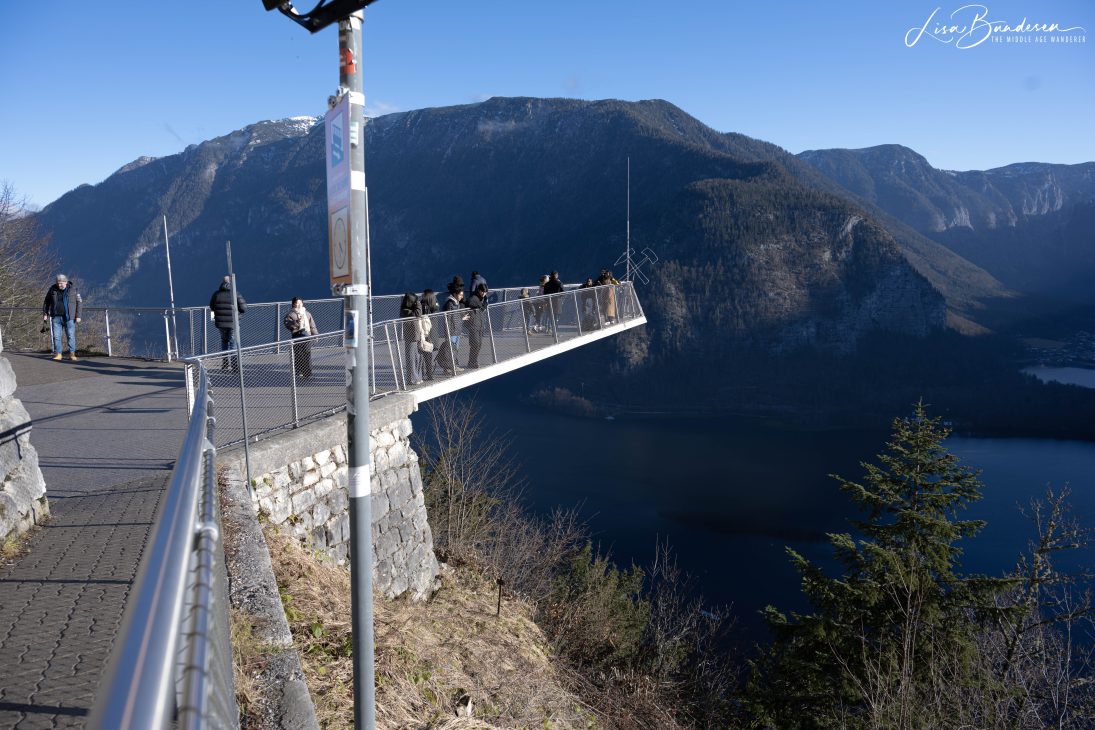
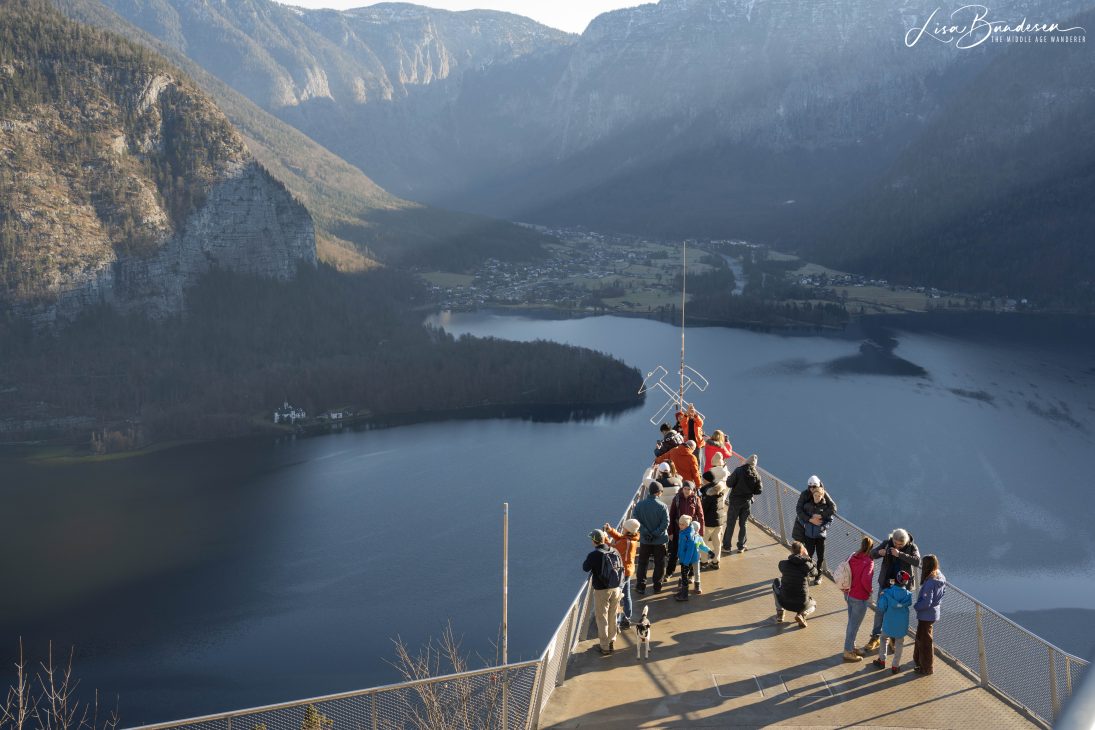
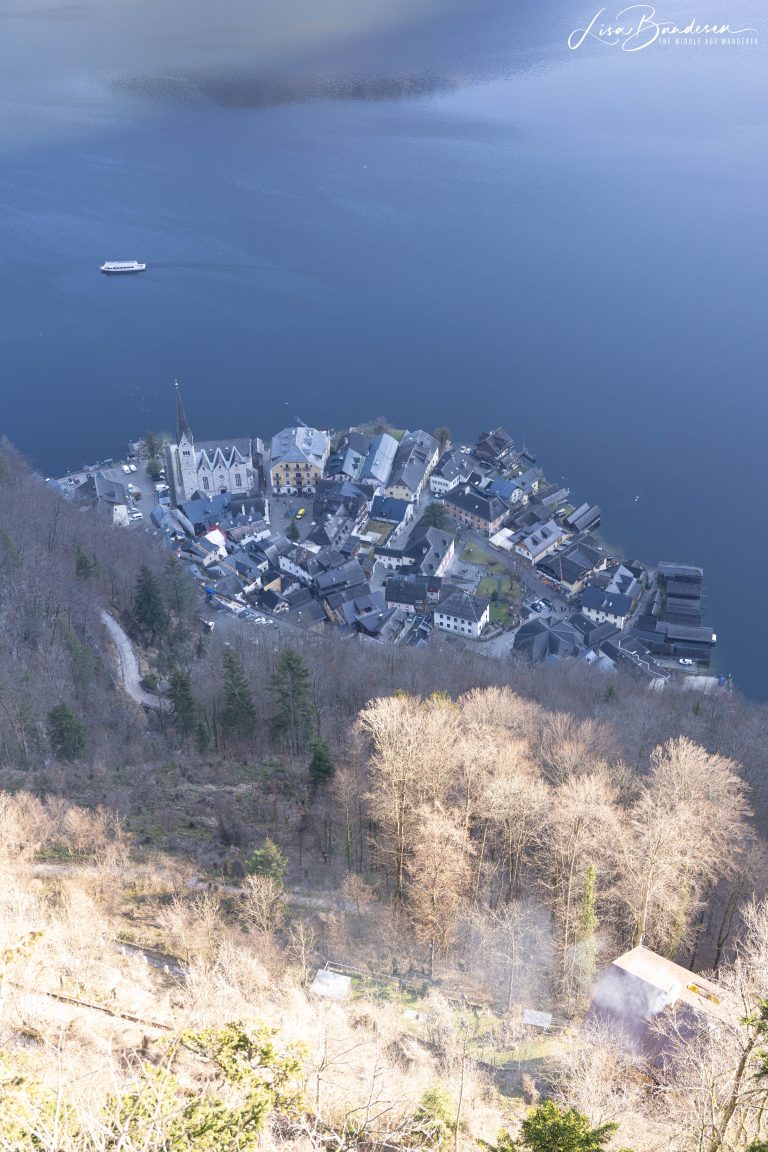
Explore the Hallstatt Salt Mines
The adventure begins with a picturesque journey to the mine, a short walk from the Skywalk.
Tours offer insights into the ancient salt extraction techniques, miners’ daily lives, and it’s role in developing the region’s economy. Interactive exhibits, including ancient tools and artifacts, bring this rich history to life.
One of the highlights of the visit is the thrilling ride down the wooden miners’ slides, which were once used by the miners to move quickly through the tunnels. Another is the subterranean salt lake, which presents a surreal experience with its tranquil waters and eerie illumination.
In addition to its historical and industrial allure, the Salt Mine educates visitors on the geology of salt and its continuing importance in our lives today. The mine also emphasises sustainability and preserving this ancient tradition for future generations.
The Salt Mine is open all year round except for four weeks from mid-January to mid-February.
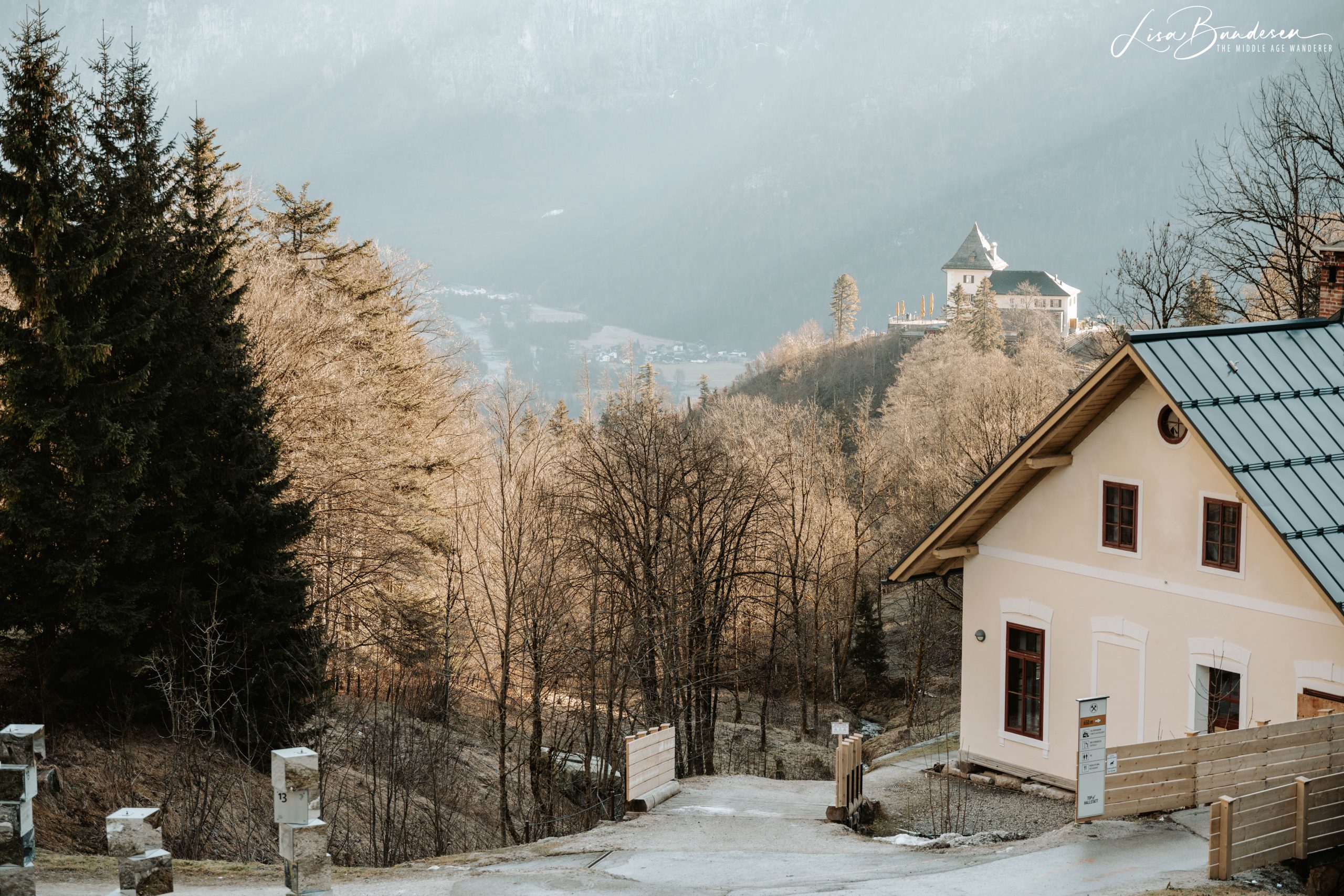
Visit the Dachstein Ice Caves
A short trip from Hallstatt, these ice caves offer a breathtaking subterranean experience with giant ice formations and a frozen waterfall.
Explore the wondrous Dachstein Ice Cave, a natural marvel of stunning ice formations and sculptures. The cave’s ethereal beauty is enhanced by its lighting and makes for an unforgettable experience.
It is closed from late October until May each year. Unfortunately, as we were in Hallstatt in December, we could not visit the caves.
Take a Boat Tour on Hallstätter See
Experience the tranquil beauty of Hallstatt from the water. Rent a traditional wooden boat or join a guided tour to experience Hallstatt from a different perspective. The Dachstein mountains’ peaceful waters and scenic views create a serene experience.
We decided not to go on a separate boat tour of the lake as we had caught the ferry from the train station to Hallstatt. While this trip is beautiful, it only gives you a little time to view the lake and its surroundings from the water. It can also be crowded, which does not provide you with room to move around for better views.
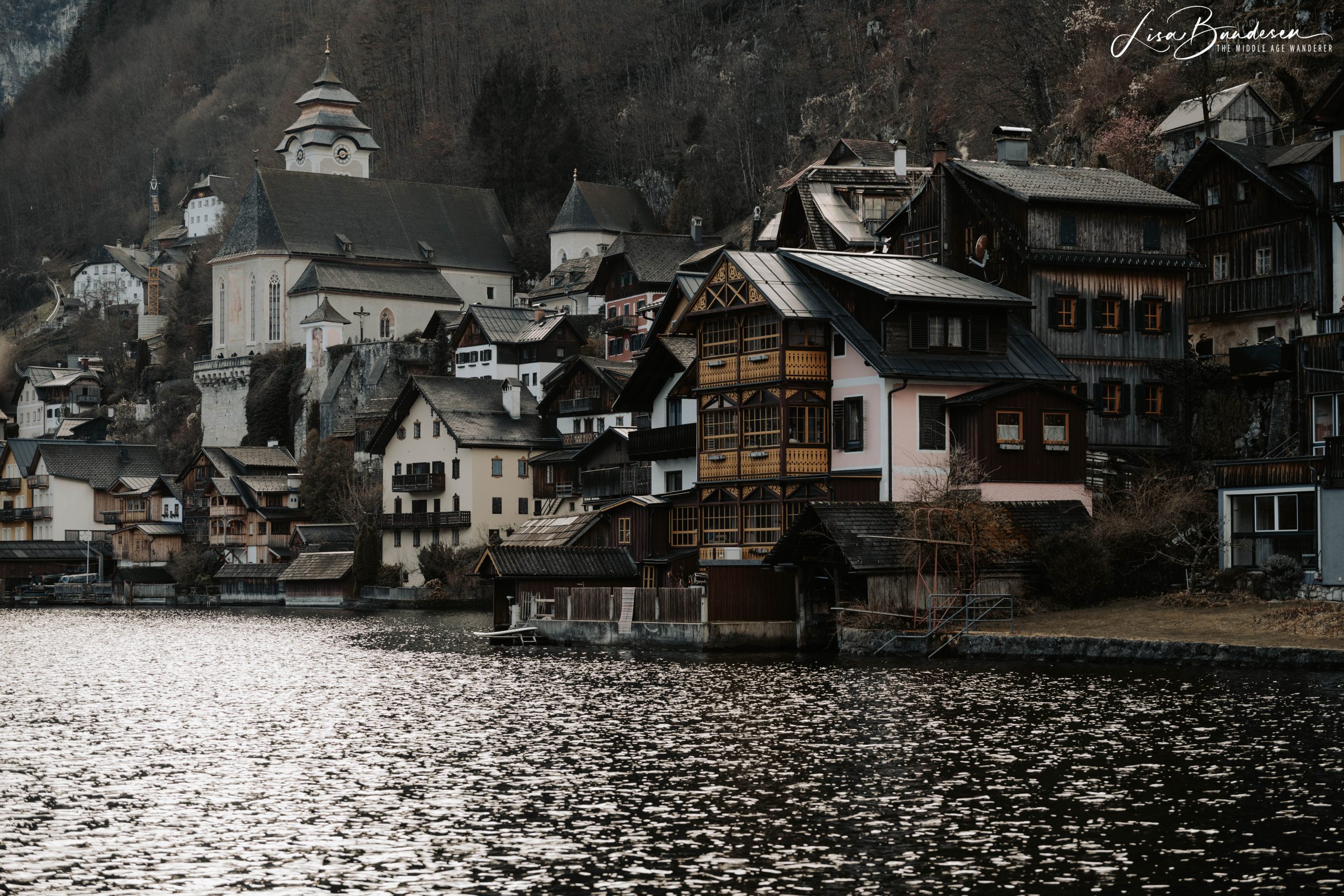
Visit St Michael’s Church and the Beinhaus (Bone House)
This small chapel in the St. Michael’s Church graveyard is known for its collection of painted skulls, a unique and historic tradition. It displays an unusual yet fascinating collection of over 600 painted skulls.
There is limited space in the cemetery. So a tradition began in the 12th century where graves were exhumed after 10 to 15 years. The skulls and bones were then moved to the Beinhaus. The skulls were lovingly cleaned and bleached in the sun. They were then painted with the deceased’s name, date of death, and sometimes decorative motifs or symbols reflecting their lives. This practice, which concluded in the 1960s, was born out of necessity but grew into a deeply respected ritual and is a unique aspect of Hallstatt’s history.
Visiting the Beinhaus is not just about confronting mortality. It’s about understanding the cultural heritage and customs that define this extraordinary village. It is a must-visit for those seeking a deeper connection with the history and traditions of Hallstatt. It serves as a reminder to honour and remember those who have passed.
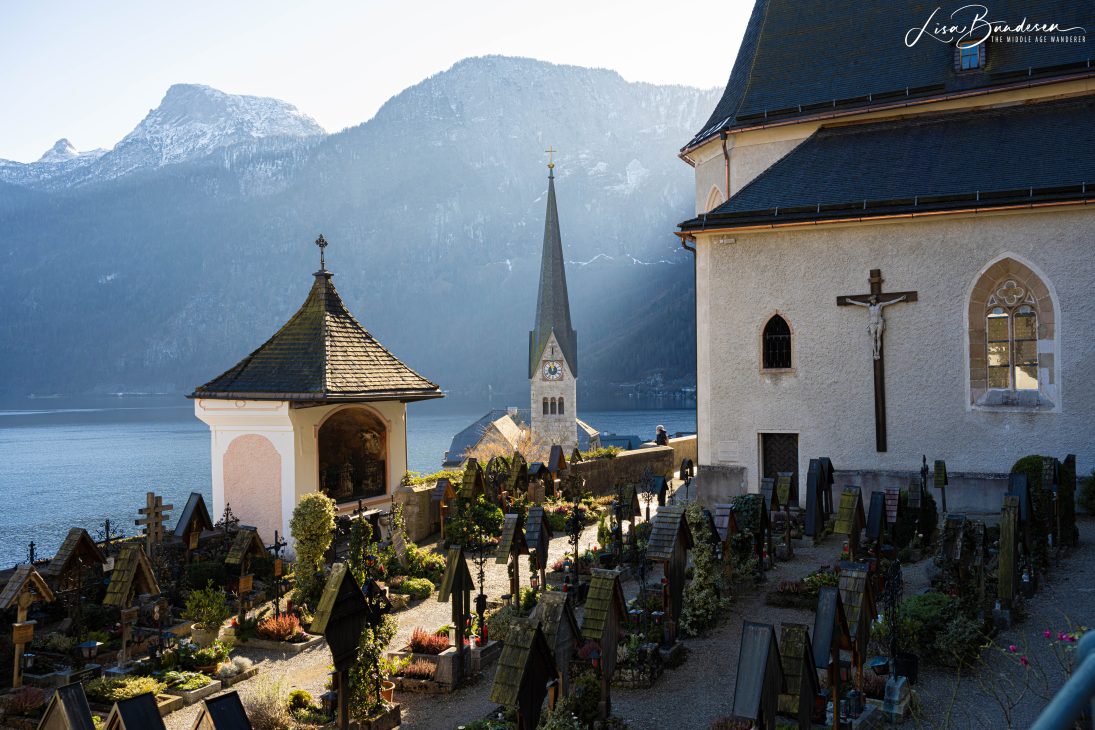
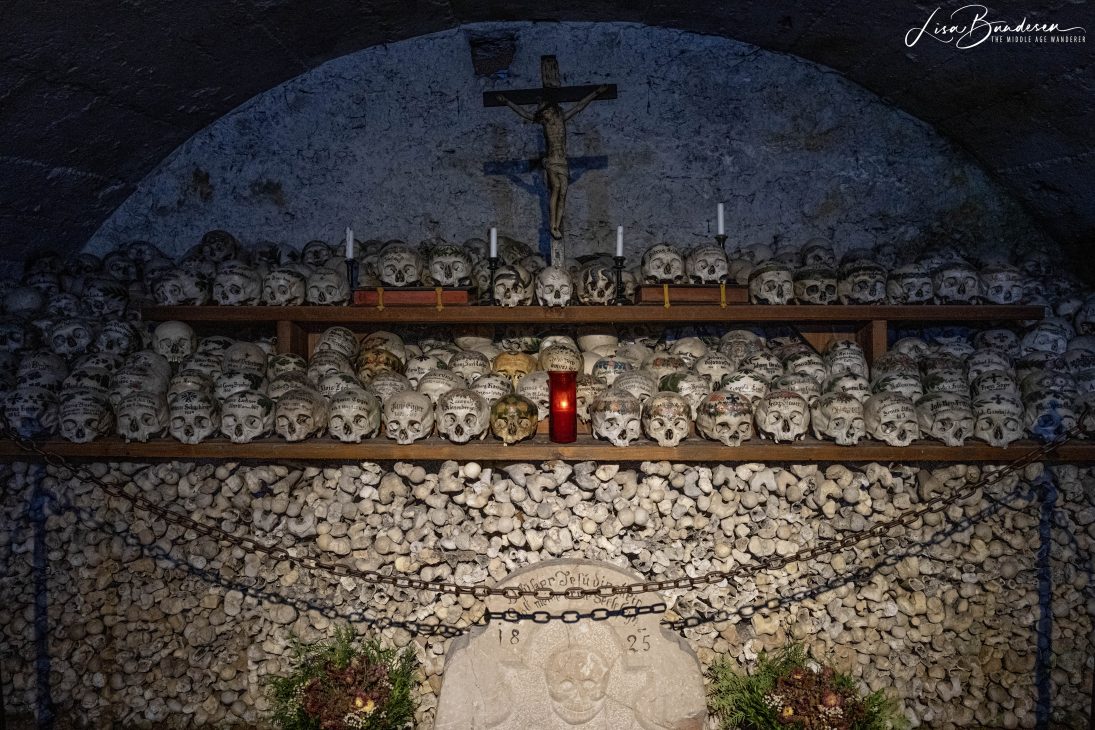
Visit Envangelische Pfarrkirche (The Lutheran Church)
The Evangelische Pfarrkirche, or the Protestant Parish Church, was built in 1863 during a time of religious renewal. The church serves as a place of worship and a symbol of the village’s rich cultural tapestry. Its striking Neo-Gothic architecture, complete with a pointed spire that pierces the sky, contrasts beautifully against the backdrop of the Dachstein mountains. It creates a picturesque scene that seems lifted from a storybook. The church’s location, perched above the village, offers breathtaking views of Hallstatt Lake and the surrounding alpine landscape, making it a favored spot for reflection and photography.
Inside, it exudes a serene atmosphere, with its simple interior inviting visitors to stop and soak in the peaceful ambiance. The church’s history is closely tied to the local salt mining community, reflecting the struggles and triumphs over the centuries. Notably, the church was built due to the Protestant community’s perseverance in the face of religious adversity, symbolising a significant chapter in the region’s history. Today, it serves as a place of worship and a reminder of the community’s resilience and unity. Whether you’re drawn by its historical significance, architectural beauty, or stunning views, the Evangelische Pfarrkirche in Hallstatt is a captivating destination. It enriches the cultural tapestry of this enchanting Austrian village.
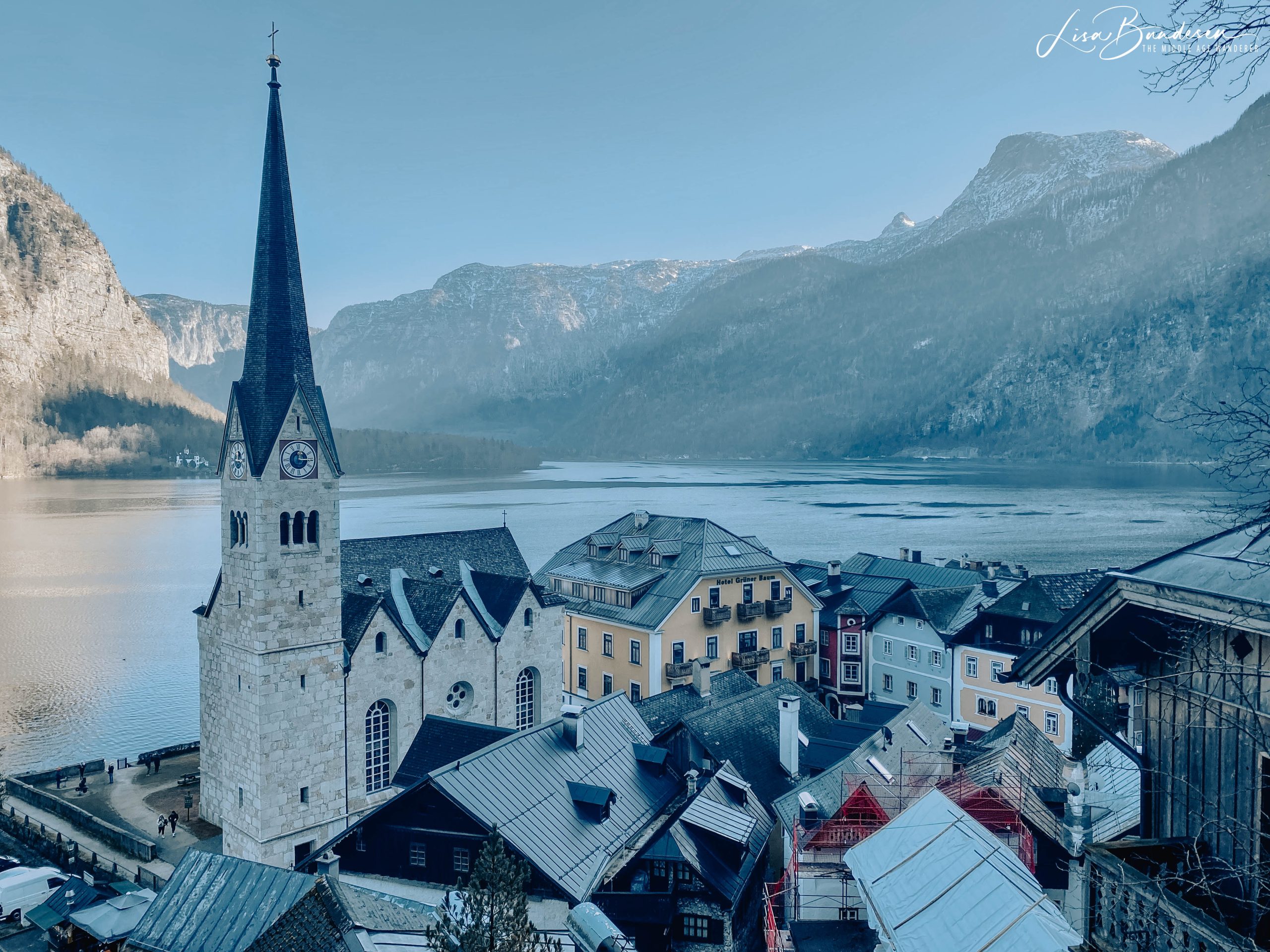
Stroll through the Market Square
The Market Square in Hallstatt is a picturesque centrepiece of this charming Austrian village, nestled between the stunning Dachstein mountains and the serene waters of Hallstätter See. The square has beautifully preserved 16th-century buildings, each telling a story of Hallstatt’s long and fascinating past. This bustling heart of the village offers a glimpse into traditional Austrian architecture. It serves as a gathering place for locals and tourists alike. The vibrant market stalls, quaint cafes, and artisan shops contribute to the lively atmosphere, making it a perfect spot to soak in the local culture and hospitality.
Throughout the year, the square hosts various events and markets that showcase local crafts, foods, and traditions, offering visitors a unique opportunity to engage with the local community. Whether you’re capturing the picturesque scenery, enjoying a coffee at a cozy cafe, or exploring the artisanal offerings, the Market Square in Hallstatt is a testament to Austrian village life’s enduring charm and beauty.
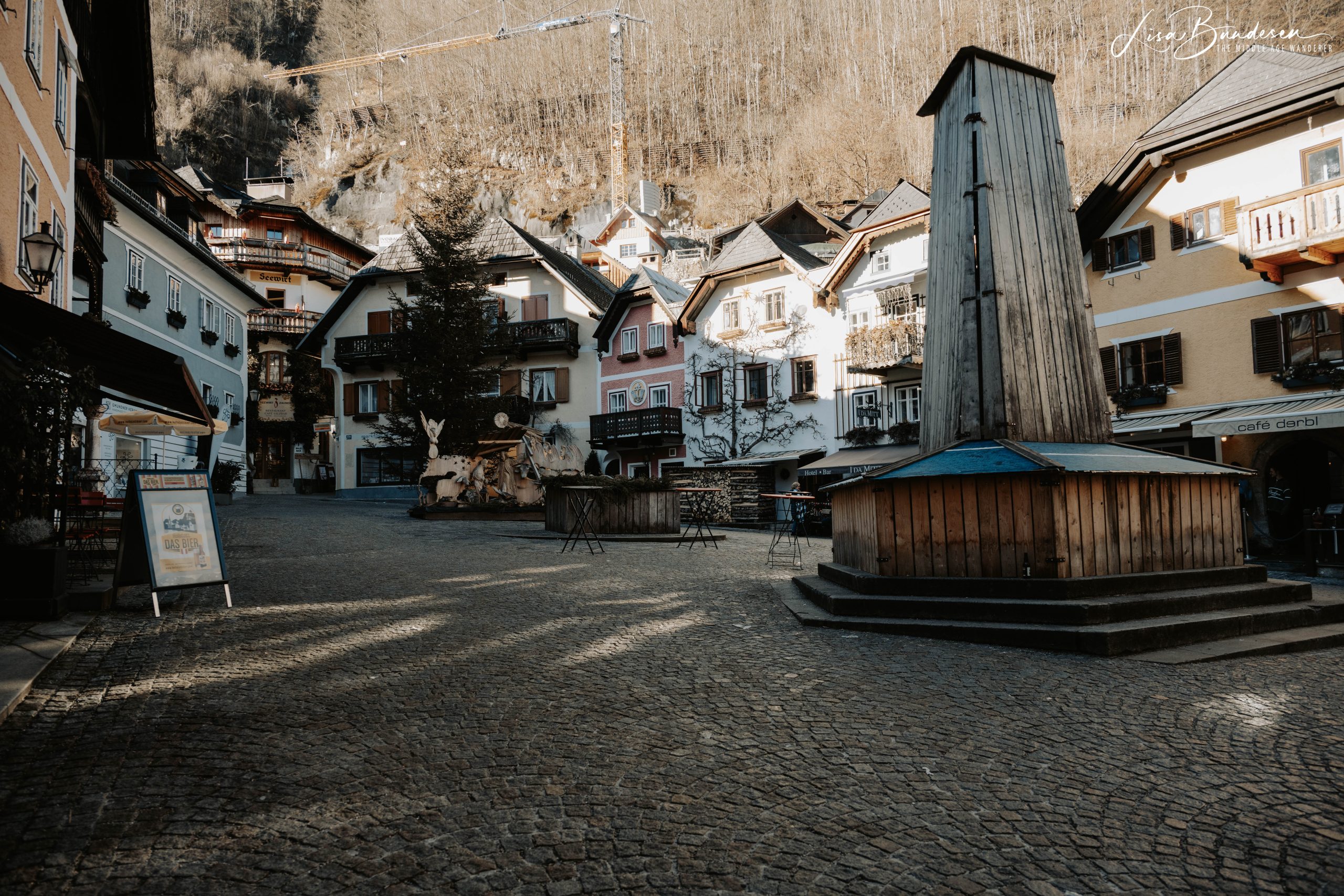
Stroll the Lake Promenade and Streets
Strolling the lake promenade and streets of Hallstatt is akin to stepping into a living postcard. You will find a harmonious blend of nature and architecture painting a scene of unparalleled beauty. The promenade, a tranquil path that hugs the shoreline of the Hallstätter See, offers an uninterrupted view of the crystal-clear waters on one side and the quaint, colourful houses of Hallstatt on the other. This tranquil walk is a sensory feast, with the rhythmic sound of waves and the panoramic view of the Dachstein mountains embracing you in a serene atmosphere. It’s an ideal setting for leisurely walks, where each step unveils a new perspective of the village’s idyllic charm and the majestic natural surroundings that have earned it a place on the UNESCO World Heritage list.
Venturing into the narrow streets of Hallstatt, you are transported into a labyrinth of historical wonder. The cobblestone pathways, flanked by ancient buildings with flower-adorned balconies, lead you through a maze of architectural marvels. These streets, some barely wide enough for two people to pass, are a testament to the village’s medieval roots, offering an intimate glimpse into its past. As you meander, you’ll discover hidden gems at every turn, from small, local museums showcasing the village’s salt-mining heritage to charming boutiques offering handmade crafts. The intimate scale of Hallstatt’s streets encourages exploration, inviting visitors to lose themselves in the enchanting atmosphere of one of Austria’s most treasured destinations.
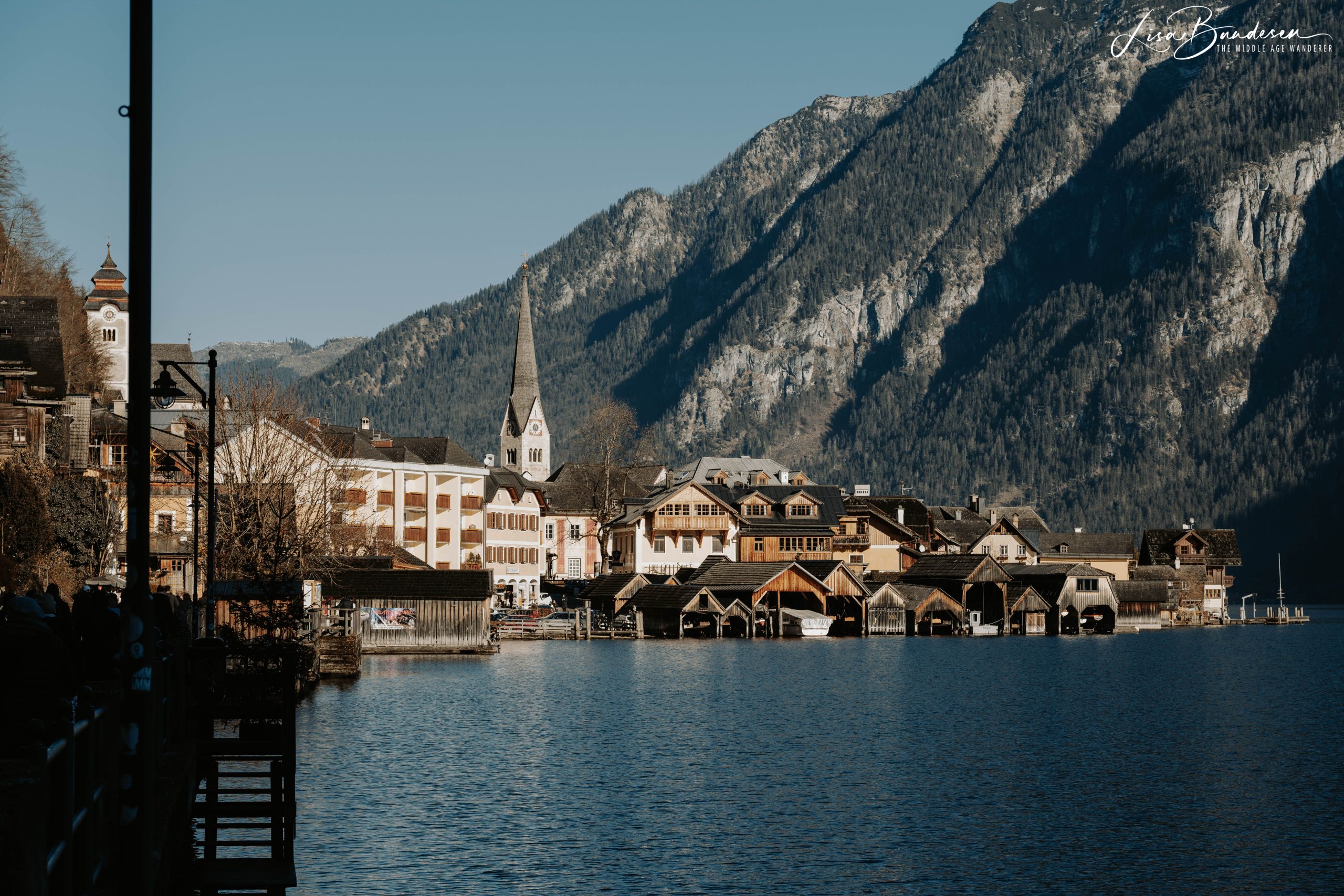
Take Some Time to Explore the Back Streets
Venturing beyond the well-trodden paths of Hallstatt’s waterfront reveals a hidden world that feels like stepping into a secret. Hallstatt’s real magic lies in the back streets higher up in the village. You are offered a glimpse into this enchanting Austrian village’s quieter, more authentic life. As you meander up the narrow, winding paths away from the bustling crowds, you’re rewarded with serene spots and views straight out of a dream. These higher streets are a treasure trove for the curious traveller, lined with quaint, colourful houses that cling to the mountainside and small, hidden gardens that burst with flowers in the spring and summer. Here, you can truly feel the soul of Hallstatt, with each step uncovering a new, unexpected delight, from ancient, moss-covered stone staircases to breathtaking panoramas of the lake and surrounding Alps that suddenly appear around a bend.
This is the Hallstatt that inspires Instagram stories. It fuels the wanderlust that brought you to this storybook village in the first place.
It’s an invitation to explore without a map. Discover the art of getting wonderfully lost in a place where every corner holds a new surprise. As you venture higher, the sound of the village below fades into a tranquil silence, broken only by the occasional echo of a distant church bell or the chirping of birds. This part of Hallstatt is a reminder of the beauty of slowing down. Its the joy of discovery that comes from veering off the beaten path. Whether it’s spotting intricate details on the centuries-old buildings or simply taking in a view that seems to have waited just for you, the back streets of Hallstatt are a must-explore for anyone yearning for a more intimate connection with this timeless village.
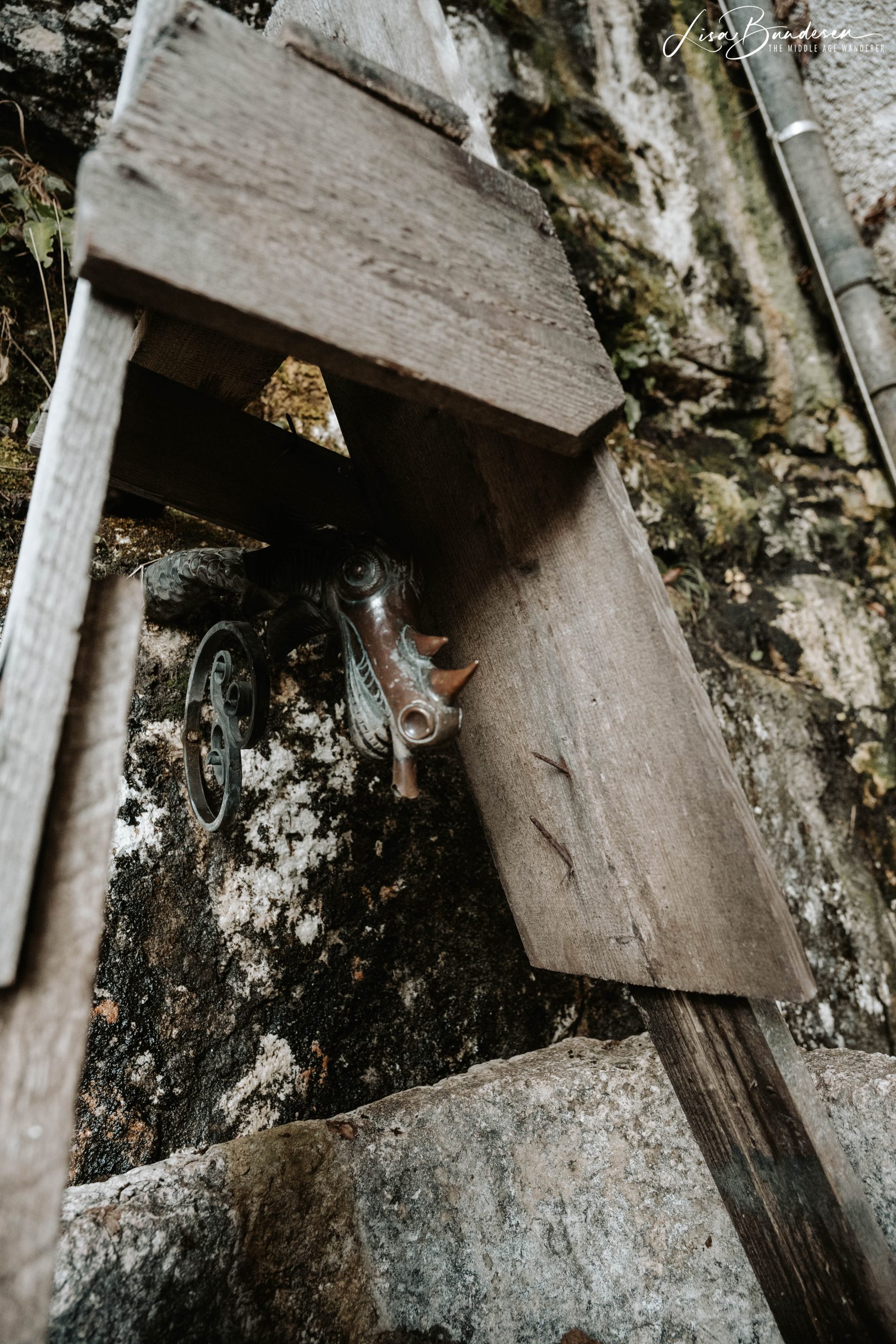
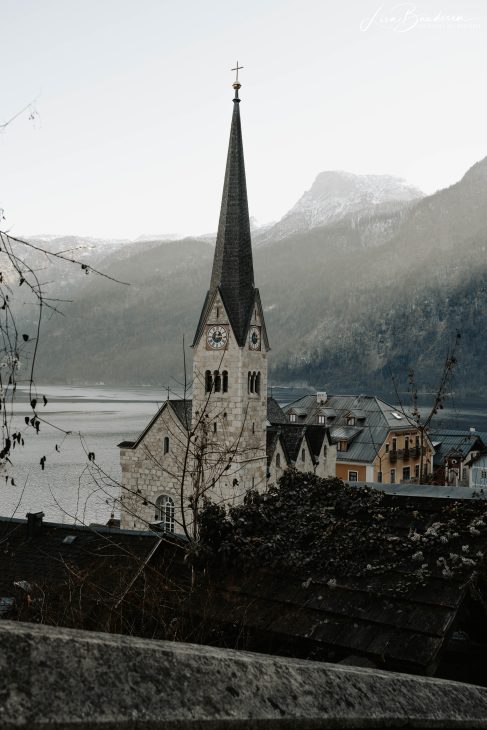
Overtourism
Over-tourism in Hallstatt presents a poignant example of the challenges facing idyllic destinations worldwide. Its popularity has surged to levels that strain local infrastructure and disrupt the daily lives of its residents. Hallstatt has seen an influx of tourists far exceeding its capacity, propelled by social media fame and its inclusion on bucket lists of must-see places. This overwhelming presence of visitors has led to concerns about preserving the village’s character, managing environmental impact, and ensuring the quality of life for its inhabitants. A recent BBC article set out that Hallstatt has just over 700 inhabitants but during high season has as many as 10,000 visitors per day.
The situation in Hallstatt underscores the need for sustainable tourism practices that balance visitors’ desires with the well-being of local communities and their environments.
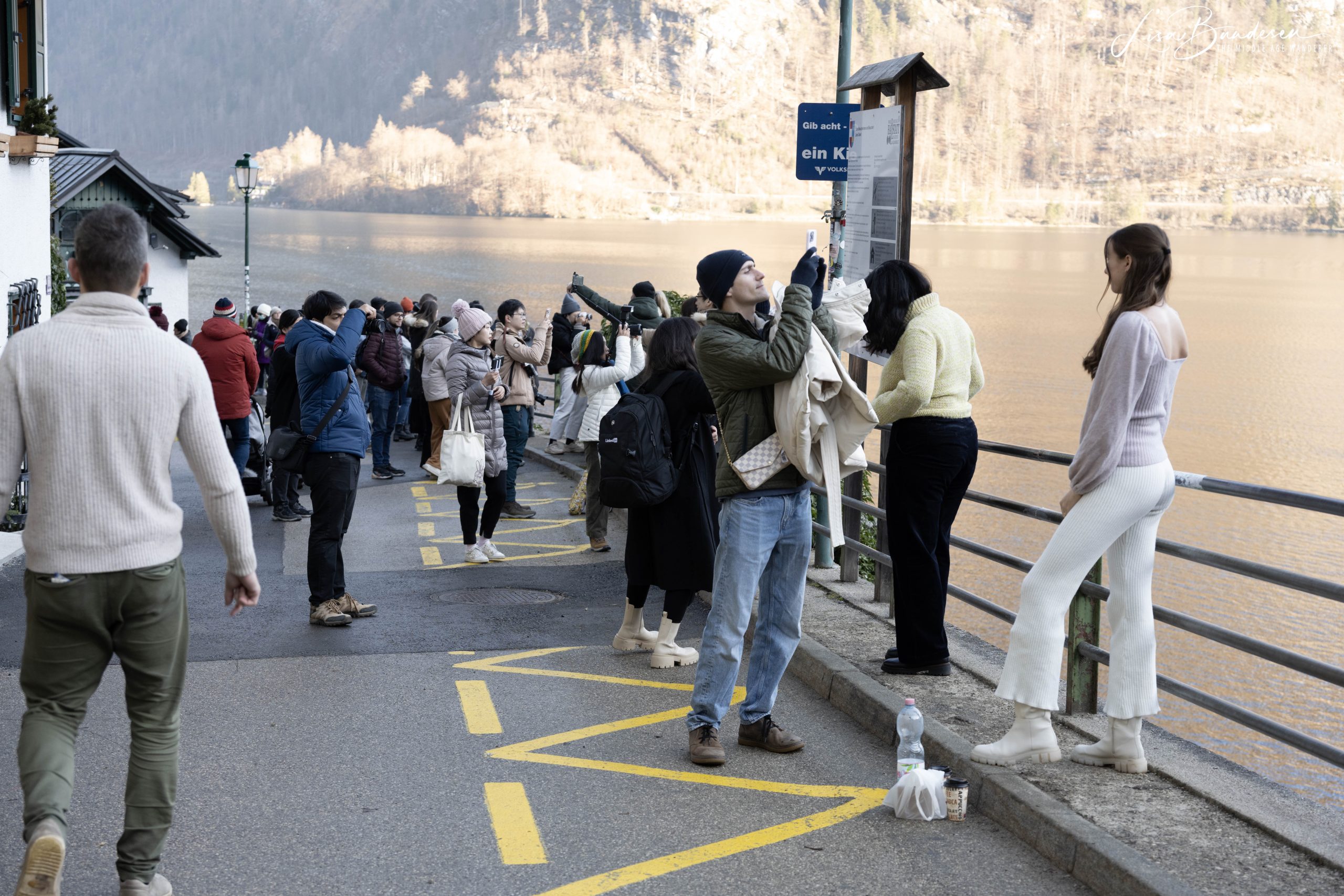
Conclusion
Hallstatt is more than just a destination; it’s a step back in time, an escape into nature, and an experience of cultural richness. Whether you’re a history buff, a nature enthusiast, or just seeking a peaceful retreat, Hallstatt promises an unforgettable journey. So pack your bags and set off to explore this Austrian treasure!
About the Author – Lisa Bundesen

I’m a 50 something semi-retired accountant, who along with my husband, Darren, has worked hard to have a great career and be financially stable. Now it’s time to enjoy life more.
To enjoy life more, I’ve had to work hard to improve my fitness (I hiked the Inca Trail in my 40’s) and to keep fit to be able to do all of those things we want to do. That isn’t always easy because we also love to explore different cuisine and wine around the world and at home.
We travel as much as possible, both overseas and at home. We call Australia home and find that there are so many places to explore here as well.
But the main reason we return home from our adventures are our two beautiful girls, Jazz and Indy. Oh and yeah we both have work as well!
PIN IT
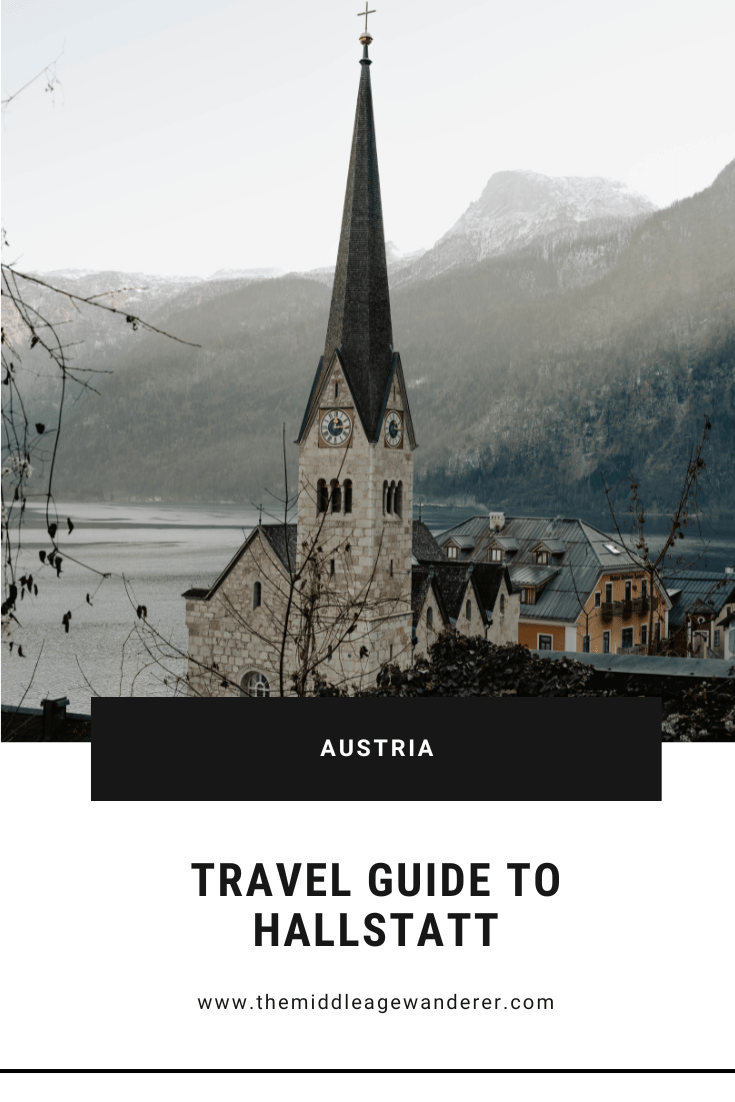
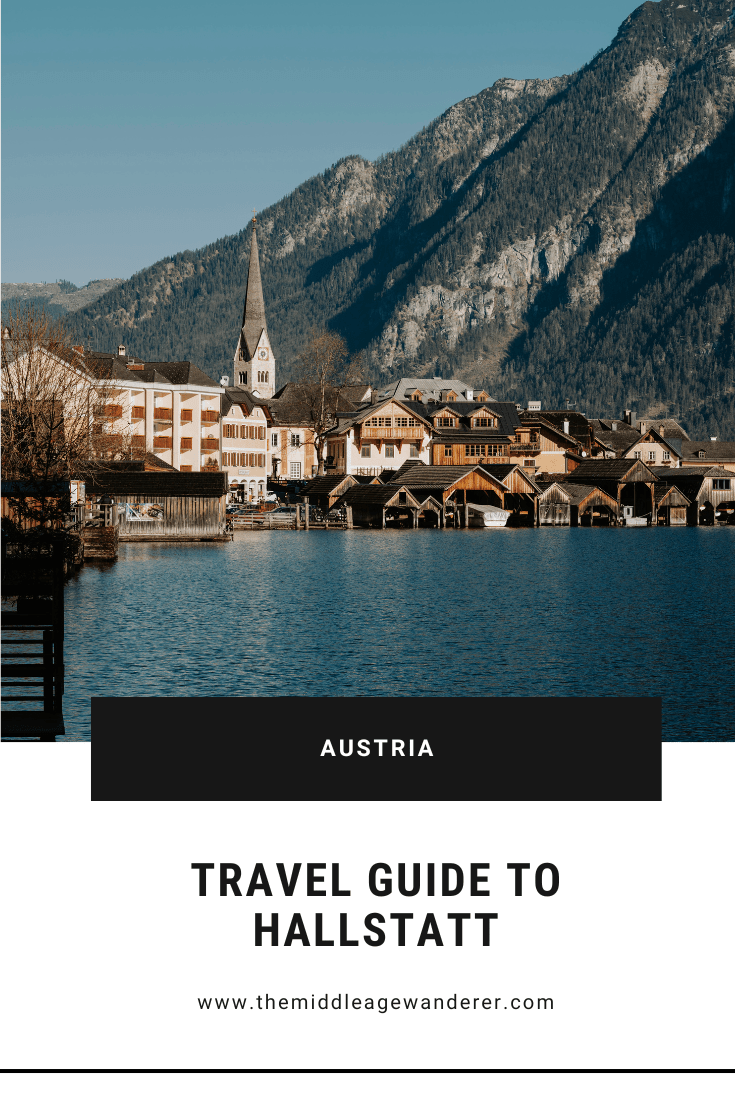
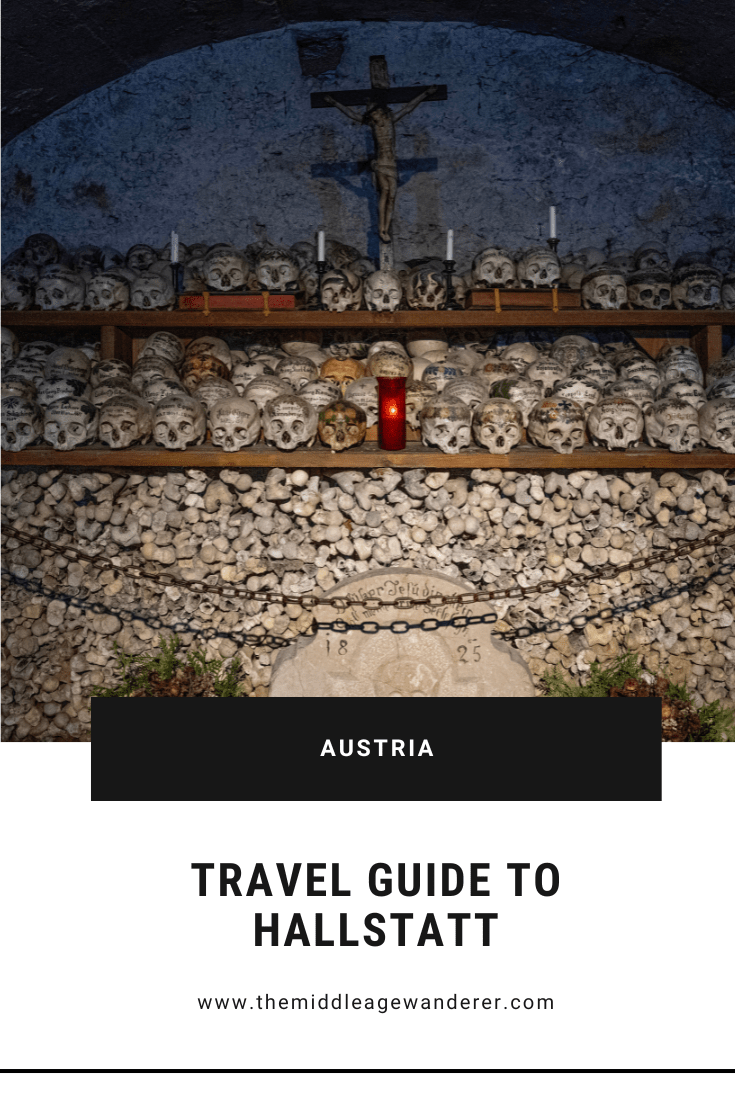



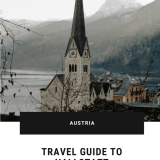
12 Responses
I also love to walk and hike! I averaged 30,000 steps a day visiting Copenhagen and Amsterdam in the summer. I would love to visit this city! Gorgeous photos. I am fascinated by St. Michael’s Church graveyard and its collection of 600 painted skulls. Enjoy your travels!
Walking is such a great way to see places so totally agree Terri. And yes, the Bonehause is unique and very interesting to see.
what a picture-perfect place! thank you for this well-written comprehensive guide, and mostly thank you for highlighting the realities of over-tourism and its impact on the locals! As an island child, my little country of Cyprus receives millions of tourists per year, and our population is well under 1 million. We have trouble enjoying our own country – the beaches, hotels and restaurants are overcrowded and it’s becoming a real problem!
Hi Galatia. It’s unfortunately a reality for so many places now. I think like many places Hallstatt is putting things in place to deal with the issue but its something that is ongoing.
I haven’t been to Hallstatt in many years. It is such a beautiful spot, and exploring the UNESCO heritage site is so interesting. The over tourism challenge after Frozen is a tough one to tackle.
It is definitely beautiful. I think I must be the only person in the world who hasn’t seen Frozen lol!
When we visited Austria, Hallstatt was high on our list. The iconic view along the lake was something we had to see for ourselves. We chose to visit by tour and it worked out just fine. Although that did mean we did not have enough time to visit the Ice Caves. We were glad the crowds were small when we were there.
We visited between Christmas and New Year and were surprised at the number of people there. But it was also a reason we decided to stay two nights to have some time when they day visitors had left.
I have visited a lot of places in Austria but I still haven’t made it to Hallstatt, but it’s very high on my list!
It is so beautiful and definitely worth visiting.
I’ve only been to a couple of cities in Austria but am adding Hallstatt to my list for next trip – it looks so beautiful.
Hallstatt is definitely worth the visit Sharyn.